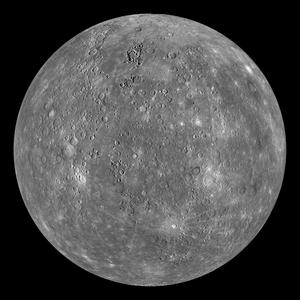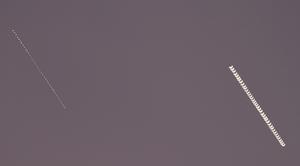Glossary term: 水星
Description: 水星是距离太阳最近的行星,也是太阳系八大行星中最小的一颗。它是一颗岩石质的类地行星,半径约为 2500 公里,比月球稍大。它的质量是地球质量的 0.055 倍。由于距离很近,从水星看到的太阳亮度是地球的七倍,水星表面受太阳风的影响很大。水星非常稀薄的外大气层就来自于这种相互作用产生的物质,再加上因频繁坠落物体而从表面喷出的物质组成的。稀薄的大气层无法保持行星的温度,因此水星表面夜间极冷(零下 180 摄氏度),白天极热(400 摄氏度),因此非常干燥。
它与太阳的平均距离约为 5800 万千米,大概是0.39 个天文单位(日地距离),公转一周需要 不到88 天。水星没有已知的绕其运行的卫星。
由于水星绕太阳运行的轨道比地球近,因此它在天空中总是显得离太阳很近。水星因其在天空中的快速运动而得名,它是罗马神话中速度极快的信使之神。两个空间探测器(水手 10 号和 信使号)已经访问过水星,BepiColombo 任务于 2020 年代中期抵达。
Related Terms:
See this term in other languages
Term and definition status: The original definition of this term in English have been approved by a research astronomer and a teacher The translation of this term and its definition is still awaiting approval
The OAE Multilingual Glossary is a project of the IAU Office of Astronomy for Education (OAE) in collaboration with the IAU Office of Astronomy Outreach (OAO). The terms and definitions were chosen, written and reviewed by a collective effort from the OAE, the OAE Centers and Nodes, the OAE National Astronomy Education Coordinators (NAECs) and other volunteers. You can find a full list of credits here. All glossary terms and their definitions are released under a Creative Commons CC BY-4.0 license and should be credited to "IAU OAE".
If you notice a factual or translation error in this glossary term or definition then please get in touch.
Related Media
水星
Credit: 美国国家航空航天局/约翰霍普金斯大学应用物理实验室/华盛顿卡内基研究所 credit link
License: PD Public Domain icons
月球-水星-昴星团相合
Credit: Giulio Colombo/ IAU OAE
License: CC-BY-4.0 Creative Commons 署名 4.0 国际 (CC BY 4.0) icons
金星和水星的轨迹
Credit: 玛塞拉-朱利亚-佩斯 (CC BY 4.0)
License: CC-BY-4.0 Creative Commons 署名 4.0 国际 (CC BY 4.0) icons











